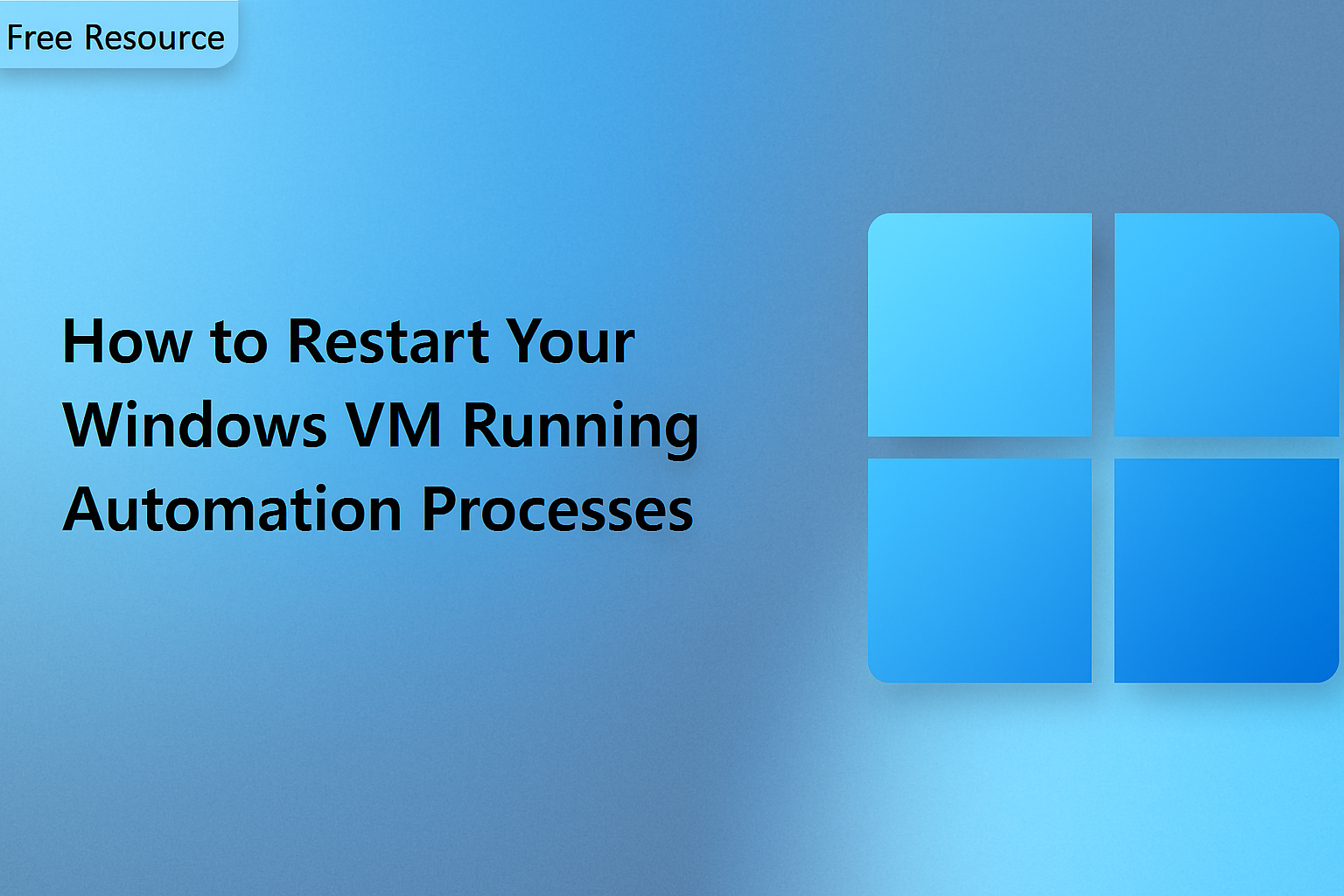Overview
Occasionally, due to memory saturation, locked services, or scheduled software updates, your Windows Virtual Machine (VM) — particularly one running automation services — may require a manual restart. This guide walks you through a reliable and safe method to restart your Windows VM using the built-in Command Prompt utility.
Performing a restart ensures your automation processes resume correctly and minimizes downtime.
Prerequisites
Before you begin, ensure:
You have administrative access to the VM.
All critical tasks or automation services are either paused or safely completed.
You’re logged into the VM via Remote Desktop Protocol (RDP) or a similar remote access tool.
Step-by-Step Instructions
Step 1: Open the Command Prompt
Press
Windows + Ron your keyboard. This opens the Run dialog box.In the input field, type:
cmdPress
Enterto launch the Command Prompt window.
Step 2: Execute the Restart Command
In the Command Prompt window:
Type the following command:
shutdown -r -t 00
-rstands for restart.-t 00defines a delay of 0 seconds — i.e., the restart begins immediately.
Press
Enter.
Step 3: Confirm the Restart
A prompt may appear showing a “Restart Anyway” button.
If prompted, click Restart Anyway to force the system to reboot, especially if background processes are resisting shutdown.
Step 4: Allow Time for the VM to Restart
Wait approximately 5–10 minutes to give the system adequate time to:
Restart core services.
Reload network drivers.
Re-enable remote connection access.
Avoid attempting to reconnect during this window to ensure the process completes cleanly.
Step 5: Reconnect to the VM
After 10 minutes:
Open your Remote Desktop tool (e.g., Microsoft Remote Desktop).
Reconnect using your VM’s IP address and credentials.
Once connected, verify that:
The automation services are running.
No error prompts appear.
Resource utilization is within normal limits.
Troubleshooting Tips
Can’t reconnect after 10 minutes?
Reach out to the Rannlab support team. The system might require additional intervention such as checking VM host health, firewall rules, or service auto-start configurations.Automation doesn’t restart automatically?
Ensure your automation tool or script is configured to auto-launch on system boot.“Access Denied” in CMD?
You may not have administrative privileges. Log in with an admin account or contact your internal IT administrator.
Final Notes
This restart procedure is a best practice for troubleshooting performance degradation or automation service failures. It provides a quick way to clear memory, reset system processes, and regain full functionality without requiring cloud console-level interventions.
For regular maintenance or custom automation health checks, Rannlab also offers managed service plans — feel free to speak with your account manager.
If you require further assistance, contact our Client Success Team at support@rannlab.com.

